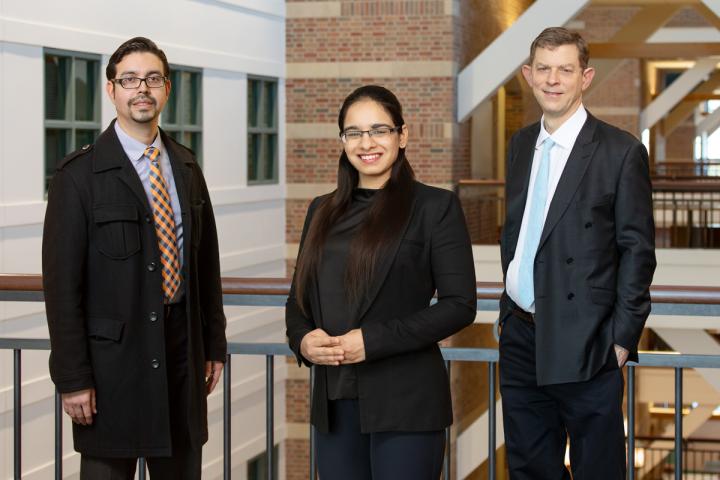
Credit: Photo by L. Brian Stauffer
CHAMPAIGN, Ill. — Monitoring the progression of multiple sclerosis-related gait issues can be challenging in adults over 50 years old, requiring a clinician to differentiate between problems related to MS and other age-related issues. To address this problem, researchers are integrating gait data and machine learning to advance the tools used to monitor and predict disease progression.
A new study of this approach led by University of Illinois Urbana Champaign graduate student Rachneet Kaur, kinesiology and community health professor Manuel Hernandez and industrial and enterprise engineering and mathematics professor Richard Sowers is published in the journal Institute of Electrical and Electronics Engineers Transactions on Biomedical Engineering.
Multiple sclerosis can present itself in many ways in the approximately 2 million people that it affects globally, and walking problems are a common symptom. About half of the patients need walking assistance within 15 years of onset, the study reports.
“We wanted to get a sense of the interactions between aging and concurrent MS disease-related changes, and whether we can also differentiate between the two in older adults with MS,” Hernandez said. “Machine-learning techniques seem to work particularly well at spotting complex hidden changes in performance. We hypothesized that these analysis techniques might also be useful in predicting sudden gait changes in persons with MS.”
Using an instrumented treadmill, the team collected gait data – normalized for body size and demographics – from 20 adults with MS and 20 age-, weight-, height- and gender-matched older adults without MS. The participants walked at a comfortable pace for up to 75 seconds while specialized software captured gait events, corresponding ground reaction forces and center-of-pressure positions during each walk. The team extracted each participant’s characteristic spatial, temporal and kinetic features in their strides to examine variations in gait during each trial.
Changes in various gait features, including a data feature called the butterfly diagram, helped the team detect differences in gait patterns between participants. The diagram gains its name from the butterfly-shaped curve created from the repeated center-of-pressure trajectory for multiple continuous strides during a subject’s walk and is associated with critical neurological functions, the study reports.
Click here to see a video describing this research.
“We study the effectiveness of a gait dynamics-based machine-learning framework to classify strides of older persons with MS from healthy controls to generalize across different walking tasks and over new subjects,” Kaur said. “This proposed methodology is an advancement toward developing an assessment marker for medical professionals to predict older people with MS who are likely to have a worsening of symptoms in the near term.”
Future studies can provide more thorough examinations to manage the study’s small cohort size, Sowers said.
“Biomechanical systems, such as walking, are poorly modeled systems, making it difficult to spot problems in a clinical setting,” Sowers said. “In this study, we are trying to extract conclusions from data sets that include many measurements of each individual, but a small number of individuals. The results of this study make significant headway in the area of clinical machine learning-based disease-prediction strategies.”
###
Hernandez also is affiliated with the Beckman Institute of Advanced Science and Technology and the the Carle Illinois College of Medicine.
Editor’s notes:
To reach Rachneet Kaur, email [email protected].
To reach Manuel Hernandez, email [email protected].
To reach Richard Sowers, call 217-333-6246; email [email protected].
The paper “Predicting multiple sclerosis from gait dynamics using an
instrumented treadmill – A machine learning approach” is available online and from the U. of I. News. DOI: 10.1109/TBME.2020.3048142
Media Contact
Lois Yoksoulian
[email protected]
Original Source
https:/
Related Journal Article
http://dx.




